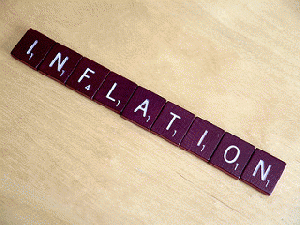Inflation worries are a recurring theme among conservatives. It is the subject of an on-going debate in Congress. Fingers are regularly pointed at the Federal Reserve and its so-called "quantitative easing" monetary policy. The trillions of dollars injected in the economy are seen as a threat to price stability and the well-being of the country. Are those fears warranted? It would appear they are not.
Under Ben Bernanke's chairmanship, the Fed bought $4.5 trillion of financial assets from banks in three successive quantitative easing programs. What happened to that money? Banks parked it for the most part in the Fed in the form of excess reserves ($2.5 trillion) earning a half percent interest rate. Consequently, the impact on M2 (money in circulation plus demand and saving deposits) is quasi nil. This is how it breaks down. Over the last 30 years, the velocity of money averages 1.9.* In the last quarter of 2015, M2 totalled $12.3 trillion, when it should have only been $9.6 trillion by historical standards. The Fed's policy thus created an extra amount of money equal to $3.4 trillion ($12.3 -- $9.6). However, as we have seen, excess reserves total $2.5 trillion. The net amount of extra money created by the Fed is therefore only $0.9 trillion ($3.4 -- $2.5). In effect, the banks sterilized most of the extra money created by the Fed, eliminating the inflation risk.
There is something ironic in conservatives crying wolf over inflation since they are the main beneficiaries -- along with the largest banks -- of the Fed's quantitative easing monetary policy thanks to the rise in value of financial assets it led to. They should be the last ones to complain.
Was quantitative easing the best policy to solve the subprime crisis? Of course not. But this is another story.
*It is obtained by dividing the gross domestic product by the money supply (M2). It measures how quickly the money circulates in the economy, the same way a grocer calculates the turnover of his stock of canned food or potatoes.





